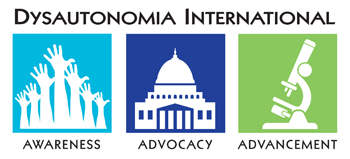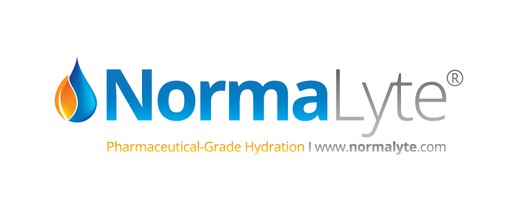1. POTS is a disorder of the autonomic nervous system. Approximately 50% of POTS patients have sudomotor neuropathy, and 20% have cardiac dropout on MIBG scans, which may be due to cardiac autonomic neuropathy.(1-4)
2. POTS is not rare. POTS impacts an estimated 1,000,000 to 3,000,000 Americans;(5-10, 30) 80-85% female, most commonly women of childbearing age.(7,8,11,12) POTS occurs around the world, but estimates are not available for other countries.
3. Research indicates that POTS may be an autoimmune condition. Antibodies targeting alpha1, beta1, and beta2 adrenergic receptors, muscarinic3 receptors,(12) g-AchR receptors,(3,13) and numerous cardiac lipid raft proteins(14) have been identified in POTS patients. Preliminary studies are underway exploring the use of IVIG in POTS.(15)
4. POTS or POTS like symptoms can appear secondary to other autoimmune conditions, such as Sjogren's syndrome, lupus, antiphospholipid syndrome, celiac disease, ankylosing spondylitis, sarcoidosis, Lambert Eaton myasthenic syndrome, myasthenia gravis, and mulitple sclerosis.(9,12,16-21)
5. POTS can cause symptoms throughout the body including tachycardia, palpitations, chest pains, lightheadedness, fainting, nausea, fatigue, gastroparesis or rapid gastric emptying, migraines, blood pooling in the extremities, Raynaud's, tremulousness, sleep abnormalities, cognitive impairments and more.(9,12,22)
6. The majority of POTS patients are hypovolemic despite adequate hydration. Standard blood and urine tests may not detect this hypovolemia, as the patient is typically deficient in plasma and RBCs. Blood volume analysis with a radio-tracer can be used to evaluate a POTS patient for hypovolemia.(23)
7. POTS is often misdiagnosed. The average time to diagnosis is 5 years and 11 months.(24) 85% of POTS patients are told it's "all in their head" or given similar psychiatric labels prior to receiving a POTS diagnosis,(24) but research shows that POTS patients are no more likely to have psychiatric disorders than healthy controls.(25,26)
8. All teens do not "outgrow" POTS and it is not "a teenage syndrome". A 10 year retrospective study of Mayo Clinic's pediatric POTS patients found that, on an average of 5 years after their visit to Mayo Clinic, 52.8% had improved symptoms but still had POTS and only 18.2% had fully recovered.(27) A 700 patient survey conducted by Dysautonomia International found that 48% of POTS patients developed their first symptoms of POTS over the age of 18.(31)
9. The severity of POTS symptoms varies. Approximately 25% of POTS patients are so disabled that they cannot work or attend school.(9) The disability seen in POTS has been compared to COPD and congestive heart failure.(9)
10. Patients with suspected POTS should be referred for autonomic function testing including tilt with heart rate variability, Valsalva and QSART. In some cases, supine/upright catecholamine testing, blood volume analysis with a radio tracer, and skin biopsies to screen for sudomotor and sensory small fiber neuropathy may be used. An investigation should be made to search for underlying or contributing conditions such as autoimmunity, Ehlers-Danlos syndrome(28) or mast cell disorders.(29)
For further information on POTS, please visit our POTS medical journal article collection or this informative lecture from Dr. Satish Raj, noted POTS researcher from Vanderbilt University's Autonomic Dysfunction Center.
References
1. Haensch CA, Lerch H, Schlemmer H, Jigalin A, Isenmann S. Cardiac neurotransmission imaging with 123I-meta-iodobenzylguanidine in postural tachycardia syndrome. J Neurol Neurosurg Psychiatry. 2010 Mar;81(3):339-43.
2. Haensch CA, Tosch M, Katona I, Weis J, Isenmann S. Small-fiber neuropathy with cardiac denervation in postural tachycardia syndrome. Muscle Nerve. 2014 Mar 20.
3. Thieben MJ, Sandroni P, Sletten DM, Benrud-Larson LM, Fealey RD, Vernino S, Lennon VA, Shen WK, Low PA. Postural orthostatic tachycardia syndrome: the Mayo clinic experience. Mayo Clin Proc. 2007 Mar;82(3):308-13.
4. Peltier AC, Garland E, Raj SR, Sato K, Black B, Song Y, Wang L, Biaggioni I, Diedrich A, Robertson D. Distal Sudomotor Findings in Postural Tachycardia Syndrome. Clin Auton Res. Apr 2010; 20(2): 93-99.
5. Fu Q, VanGundy TB, Shigeki S, Auchus RJ, William GH, Levine BD. Menstrual Cycle Affects Renal-Adrenal and Hemodynamic Responses during Prolonged Standing in the Postural Orthostatic Tachycardia Syndrome. Hypertension. July 2010; 56(1): 82-90.
6. Kanjwal K, Saeed B, Karabin B, Kanjwal Y, Grubb BP. Use of methylphenidate in the treatment of patients suffering from refractory postural tachycardia syndrome. Am J Ther. 2012 Jan;19(1):2-6.
7. Mustafa H, Raj SR, Diedrich A, Black B, Paranjape SY, Dupont WD, Williams GH, Biaggioni I, Robertson D. Altered Systemic Hemodynamic & Baroreflex Response to Angiotensin II in Postural Tachycardia Syndrome. Circ Arrhythm Electrophysiol. Feb 2012; 5(1): 173-180.
8. Robertson D. The Epidemic of Orthostatic Tachycardia and Orthostatic Intolerance. The American Journal of the Medical Sciences. Vol. 317(2) February 1999: 75-77.
9. Grubb BP. Postural Tachycardia Syndrome. Circulation. 2008; 117: 2814-2817.
10. Brooks J, Francis L. Postural orthostatic tachycardia syndrome Dental treatment considerations. Journal of the American Dental Association. Vol. 137, April 2006.
11. Garland EM, Raj SR, Black BK, Harris PA, Robertson D. The hemodynamic and neurohumoral phenotype of postural tachycardia syndrome. Neurology 2007;69:790-798.
12. Raj SR. The Postural Tachycardia Syndrome (POTS): Pathophysiology, Diagnosis & Management. Indian Pacing Electrophysiol J. 2006 Apr-Jun; 6(2): 84-99.
12. Li H, Yu X, Liles C, Khan M, Vanderlinde-Wood M, Galloway A, Zillner C, Benbrook A, Reim S, Collier D, Hill M, Raj SR, Okamoto LE, Cunningham MW, Aston CE, Kem DC. Autoimmune Basis for Postural Tachycardia Syndrome. J Amer Heart Assoc. 2014:3.
13. Sandroni P, Low PA. Other Autonomic Neuropathies Associated with Ganglionic Antibody. Auton Neurosci. Mar 12, 2009; 146(1): 13-17.
14. Wang XL, Ling TY, Charlesworth MC, Figueroa JJ, Low P, Shen WK, Lee HC. Autoimmunoreactive IgGs against cardiac lipid raft-associated proteins in patients with postural orthostatic tachycardia syndrome. Transl Res. 2013 Jul;162(1):34-44.
15. Personal communications between Dysautonomia International Board members and Dr. Hasan Abdallah at The Children's Heart Institute in Reston, Virginia, Dr. Brent Goodman at the Mayo Clinic in Scottsdale, Arizona and Dr. David Kem at the Univeristy of Oklahoma Health Sciences Center in Oklahoma City, Oklahoma.
16. Gibbons CH, Freeman R. Autonomic neuropathy and coeliac disease. J Neurol Neurosurg Psychiatry 2005;76:579-581.
17. Kaya MG, Akpek M, Lam YY, Dogdu O, Ardic I, Akgul O, Ozgocmen S. Abnormal heart rate recovery on exercise in ankylosing spondylitis. Int J Cardiol. 2013 Nov 5;169(3):215-8.
18. Schofield JR, Blitshteyn S, Shoefeld Y, Hughes GRV. Postural tachycardia syndrome (POTS) and other autonomic disorders in antiphospholipid (Hughes) syndrome (APS). Lupus. February 25, 2014.
19. Evoli A, Liguori R, Romani A, Mantegazza R, Di Muzio A, Giometta B, Pergoraro E, Rodolico C, Vigliani MC. Italian recommendations for Lambert-Eaton myasthenic syndrome (LEMS) management. Neurol Sci. 2014 Apr; 35(4): 515-20.
20. Calin C, Savu O, Dumitru D, Ghiorghiu I, Calin A, Capraru C, Popescu BA, Croitoru M, Vilciu C, Ginghina C. Cardiac Involvement in Myasthenia Gravis ? Is There a Specific Pattern? Rom J. Intern. Med. 2009; 47(2): 179-189.
21. Kanjwal K, Karabin B, Kanjwal Y, Grubb BP. Autonomic Dysfunction Presenting as Postural Orthostatic Tachycardia Syndrome in Patients with Multiple Sclerosis. Int J Med Sci. 2010; 7(2): 62-67.
22. Ojha A, Chelimsky TC, Chelimsky G. Comorbidities in pediatric patients with postural orthostatic tachycardia syndrome. J Pediatr. 2011 Jan; 158(1): 20-3.
23. Raj SR, Biaggioni I, Yamhure PC, Black B, Paranjape SY, Byrne D, Robertson D. Renin-Aldosterone Paradox and Perturbed Blood Volume Regulation Underlying Postural Tachycardia Syndrome. Circulation. 2005; 111: 1574-1582.
24. Dysautonomia International Report: Physician Patient Interaction in Postural Orthostatic Tachycardia Syndrome; publication pending. E-mail research@dysautonomiainternational.org to receive a copy once the report is published.
25. Wagner C, Isenmann S, Ringendahl H, Haensch CA. Anxiety in patients with postural tachycardia syndrome (POTS) [Article in German]. Fortschr Neurol Psychiatr. 2012 Aug; 80(8): 458-62.
26. Raj V, Hama K, Raj SR, Byrne D, Blakely RD, Biaggioni I, Robertson I, Shelton RC. Psychiatric Profile and Attention Deficits in Postural Tachycardia Syndrome. J Neurol Neurosurg Psychiatry. Mar 2009; 80(3): 339-344.
27. Kizilbash SJ, Ahrens SP, Bhatia R, Killian JM, Kimmes SA, Knoebel EE, Muppa P, Weaver AL, Fischer PR. Long-term outcomes of adolescent-onset postural orthostatic tachycardia syndrome. Presented at the 24th International Symposium on the Autonomic Nervous System, Kohala Coast, Hawaii, October 23, 2013.
28. Wallman D, Weinberg J, Hohler AD. Ehlers-Danlos Syndrome and Postural Tachycardia Syndrome: A relationship study. J Neurol Sci. 2014 Mar 11. pii: S0022-510X(14)00145-2.
29. Shibao C, Arzubiaga C, Roberts J, Raj S, Black B, Harris P, Biaggioni I. Hyperadrenergic Postural Tachycardia Syndrome in Mast Cell Activation Disorders. Hypertension. 2005; 45: 385-390.
30. Mar M, Raj S. Neuronal and hormonal perturbations in postural tachycardia syndrome Front Physiol. 2014; 5: 220.
31. Stiles LE, Ross AJ. Physician Patient Interaction in Postural Orthostatic Tachycardia Syndrome. Dysautonomia International. July 2014.
| | |



